
After splitting two beehives and getting a nuc (nucleus hive), I am now the proud owner of five beehives. I expect to pick up another nuc I am trading for in the next week, so it should be six hives soon. That’s twice as many as I had last year.
A year ago, my nucs arrived the first week of June. I’m excited to get this year’s new hives up and running six weeks sooner. That should build stronger hives and give me a chance to harvest some honey in the spring honey flow. It should also mean a stronger, more robust hive for the summer honey flow.
Picking up the Nuc
I visited my friendly local commercial beekeeper on Thursday and brought my wife, who is allergic to bees. (We brought her head-to-toe bee suit, just in case.) When we got out of the truck, we could hear the hum of the bees, but there were not too many in the air around us. We picked up our nuc and stashed it in the backseat area. Then I picked up two queen cups and put them in a small insulated bag we had brought with us. The bag had two bottles of hot water to keep the queens warm.
As we drove off, there was a bee in the car, but we let it out. Then there was another. By the time we got to the bottom of the driveway, there was a third. Not a winning formula for a long drive home with someone allergic to bees. We stopped the car, and I removed the nuc box to the pickup truck bed, where I strapped it down.
There must have been a small hole in the nuc where the bees could squeeze in and out, because by the time I turned off the electric fence, propped open the gate, and got my bee suit on at hope, a dozen bees were doing orientation flights on the back of my truck. I hurriedly carried the nuc to the bee yard and set it on top of the hive body I had set aside for it. Then I opened the exit so that any bees who wanted to could fly out. By being in the same spot as their hive, they would find their way back.
Inserting the Queen Cups
Before I opened the nuc and transferred the frames of bees into their new hive, I wanted to move the queen cups into the splits. For those new or non-beekeepers, below is an explanation of what this means.
When you split a hive, you open up a robust, healthy hive and you remove a few frames of bees and set them up in a new hive. You must move some brood (eggs, larvae, and pupae or capped brood) as this tugs on the bees’ instincts to stay in that hive and take care of the brood rather than flying off and returning to their original hive.
The problem with a split is that you are creating a hive without a queen, which cannot survive. If you do a walk-away split, you are in effect hoping the hive will produce an emergency queen from a fresh egg, but this is not always successful. It also takes 16 days for an egg to hatch into a queen. By placing a queen pupae that will hatch in just a day or two into the hive, the bees will not need to create a new queen. This saves at least two weeks on the hive development.
To help the queens develop, I inserted the queen cups between two frames of brood, where there were plenty of bees to help keep them warm. I had to do this without gloves, which I usually wear when tending to my bees. The bees were gentle, and I was careful. While they did not sting me, I nevertheless put my gloves back on when was done. I’m not ready to be a gloveless beekeeper yet. I got stung five times last year. No reason to break that record in a single day.
One split was strong with lots of bees. The other had only two frames of brood. That should be plenty, but it will be interesting to see if the different hive strengths impact the queens.
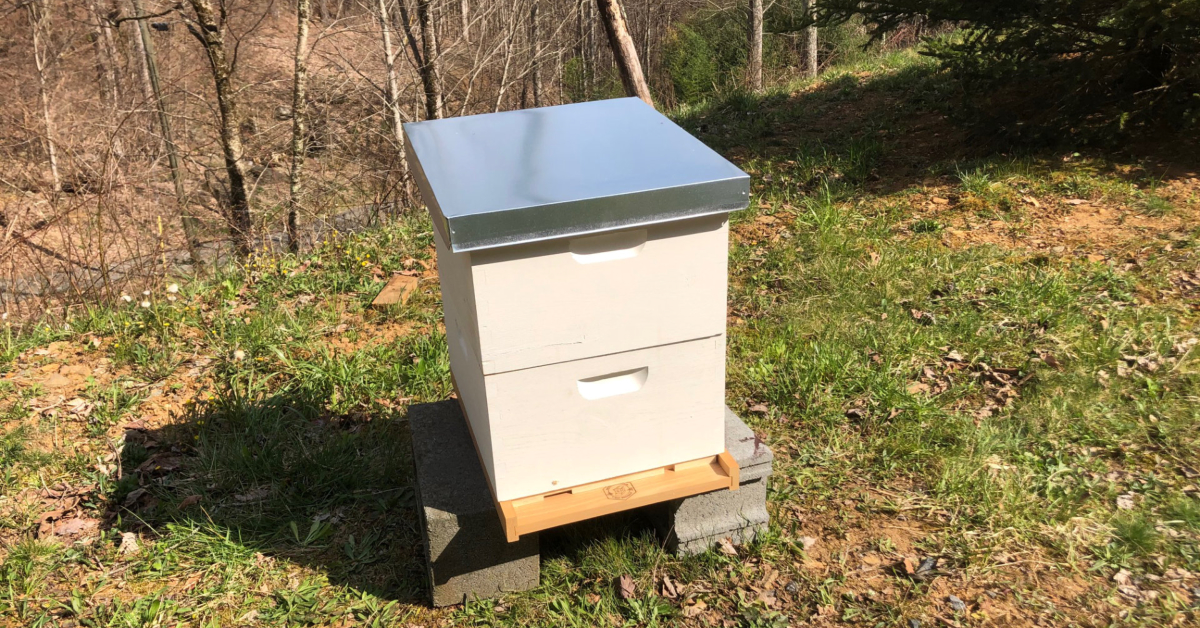
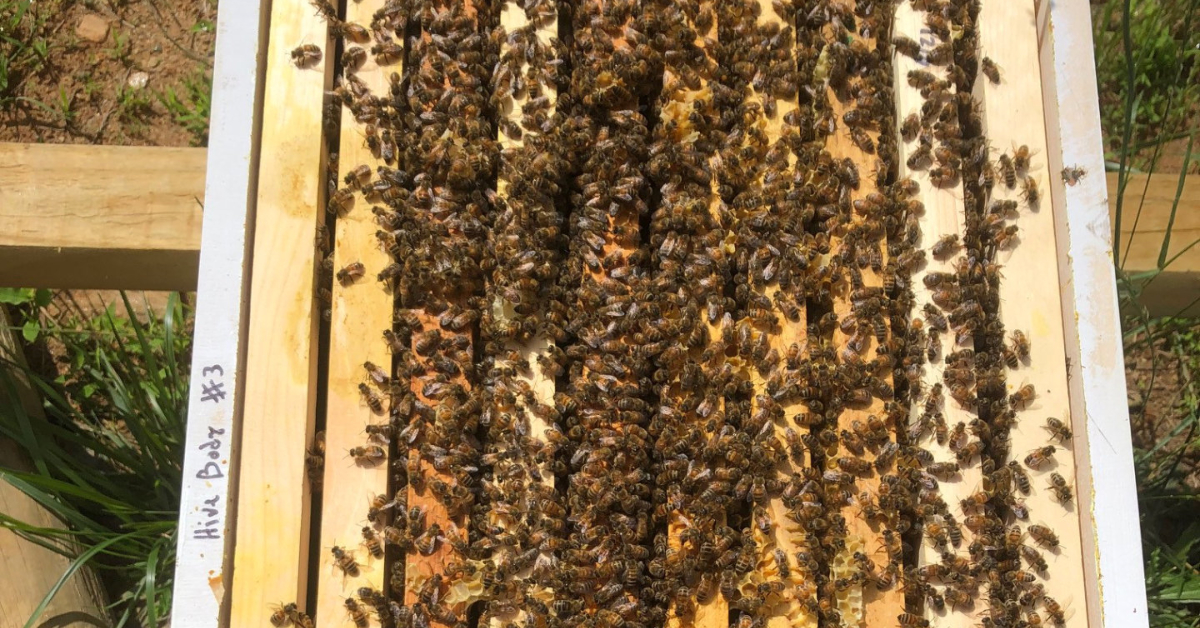
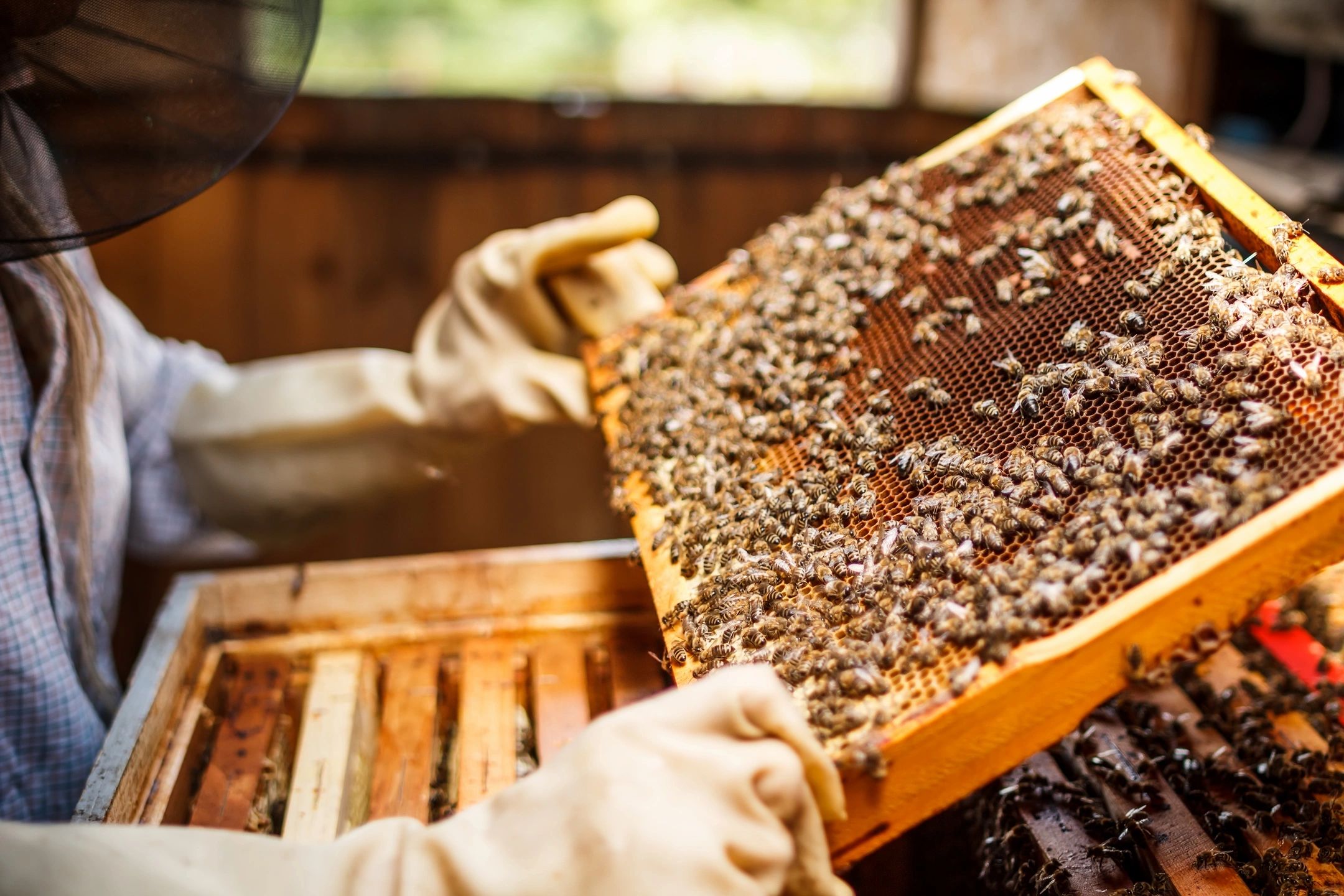

Bee Instincts
One thing I have learned as a beekeeper is that bees know what they are doing. Their instincts evolved over millions of years into a very specialized hive system. My job as a beekeeper is to harness those instincts, to work with them, not against them. By giving the queenless split a ready-to-hatch queen, I am leveraging their instincts to not only want a queen in the hive but to protect and nourish her.
In a week, the queen should have completed her mating flight. In another week, she should be laying. I’ll check the hive in 18 or 21 days to ensure there are eggs and fresh brood. That will be a sign that the queen is laying and the hive will then be able to expand.
Re-Hiving the Nuc
Once the splits were in good shape, I turned my attention to the nucleus hive. It was full of bees, which was nice to see. There were two good frames of brood and another partial plus two frames of nectar and pollen. I added the five frames to an empty hive I had prepared. It had three frames of drawn comb and two frames of wax-coated plastic foundation. The bees were calm, despite being hauled across a couple of counties.
All winter, I built new hive bodies and assembled frames. I also built some bottom boards and lids from scratch, but I was one lid short. I just used a spare bottom board turned upside down. Looks like I will be building at least two more hive covers this weekend. Then I will have some painting to do. At least it looks like we will have decent weather for painting. Last weekend, it was too cold.
Six Hives
Later that afternoon, I came out to check on the hives and there was plenty of bee traffic and a good bit of pollen was coming into each hive. I had fed the new hives and had put out an open feeder for the existing hives. It looks like they are enjoying the warm weather too.
Standing there, watching bees zoom in and out, I could hear the cheerful buzz of bees.
“How many hives will you have?” my wife asked from a safe distance.
“Six.”
“I think that should be enough, don’t you?”
“Yeah, I’m good with six.” I told her. “This year,” I added silently to myself.


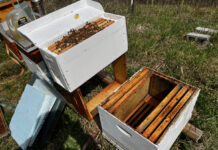
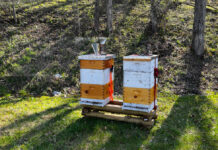

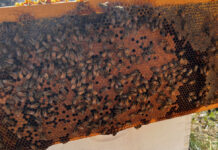

I’m not allergic to bee stings, but I find them incredibly uncomfortable, however I’ve only had a few stings. Do you get used to bee stings?
Yes, most beekeepers build up resistance so it becomes an annoyance, not something that is painful. I am not there yet, but I am making progress. Right now, a bee sting hurts enough to make me swear, but the pain goes away quickly and it doesn’t swell up as much as it used to. On the plus side, bee stings are supposed to help with arthritis.
In my opinion, yellow jackets are worse because they are more aggressive and their hives can be hidden in holes in the ground and you can stumble upon one unexpectedly.
Comments are closed.